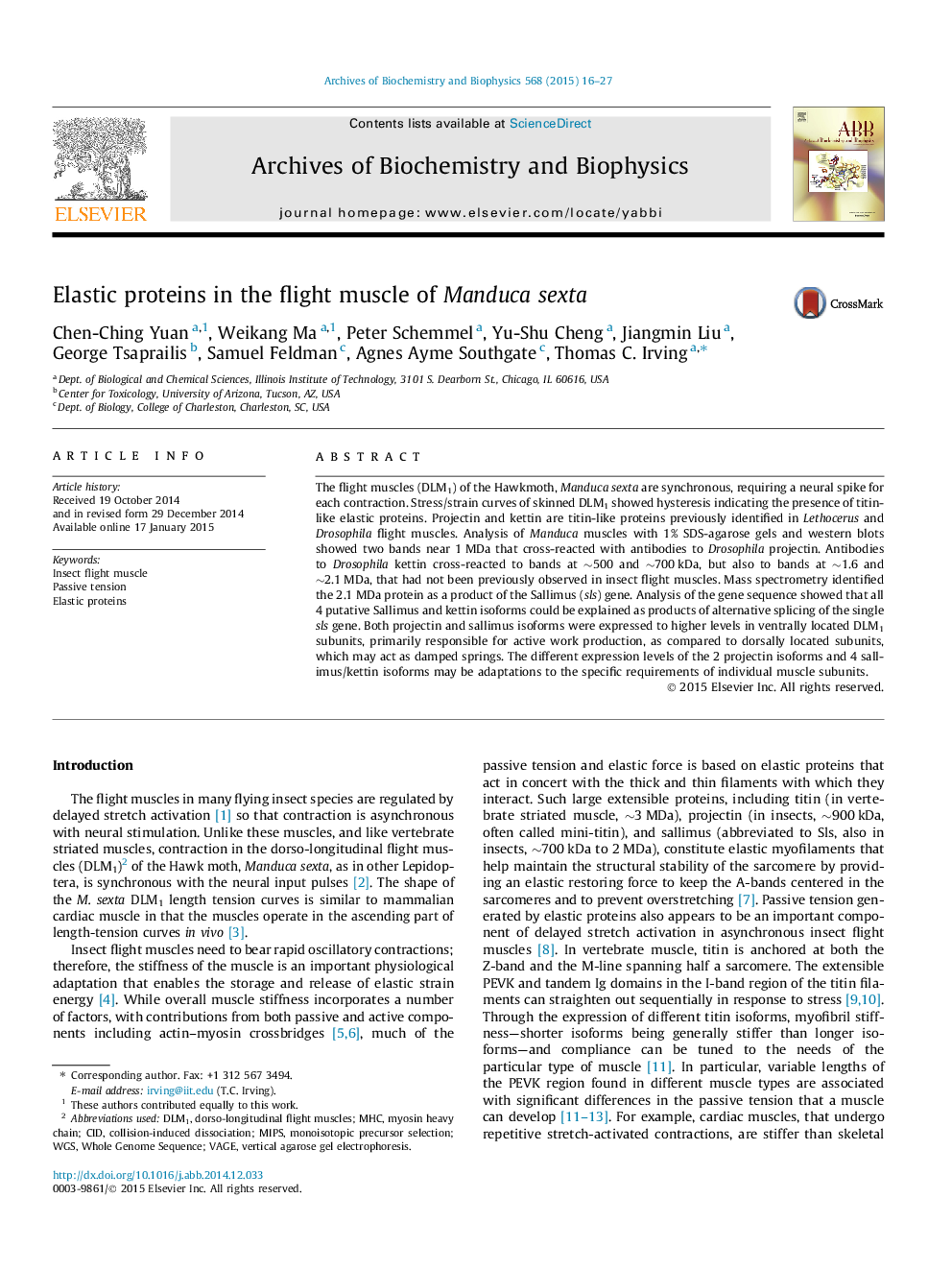| Article ID | Journal | Published Year | Pages | File Type |
|---|---|---|---|---|
| 1925009 | Archives of Biochemistry and Biophysics | 2015 | 12 Pages |
•Synchronous flight muscle of M. sexta is more compliant than asynchronous muscles.•6 isoforms of candidate high molecular weight elastic proteins have been identified.•All proteins can be explained as products of the projectin and sls genes.•sls gene products >1 MDa have not been previously seen in insect flight muscles.•Regional differences in expression patterns may explain physiological adaptations.
The flight muscles (DLM1) of the Hawkmoth, Manduca sexta are synchronous, requiring a neural spike for each contraction. Stress/strain curves of skinned DLM1 showed hysteresis indicating the presence of titin-like elastic proteins. Projectin and kettin are titin-like proteins previously identified in Lethocerus and Drosophila flight muscles. Analysis of Manduca muscles with 1% SDS-agarose gels and western blots showed two bands near 1 MDa that cross-reacted with antibodies to Drosophila projectin. Antibodies to Drosophila kettin cross-reacted to bands at ∼500 and ∼700 kDa, but also to bands at ∼1.6 and ∼2.1 MDa, that had not been previously observed in insect flight muscles. Mass spectrometry identified the 2.1 MDa protein as a product of the Sallimus (sls) gene. Analysis of the gene sequence showed that all 4 putative Sallimus and kettin isoforms could be explained as products of alternative splicing of the single sls gene. Both projectin and sallimus isoforms were expressed to higher levels in ventrally located DLM1 subunits, primarily responsible for active work production, as compared to dorsally located subunits, which may act as damped springs. The different expression levels of the 2 projectin isoforms and 4 sallimus/kettin isoforms may be adaptations to the specific requirements of individual muscle subunits.
